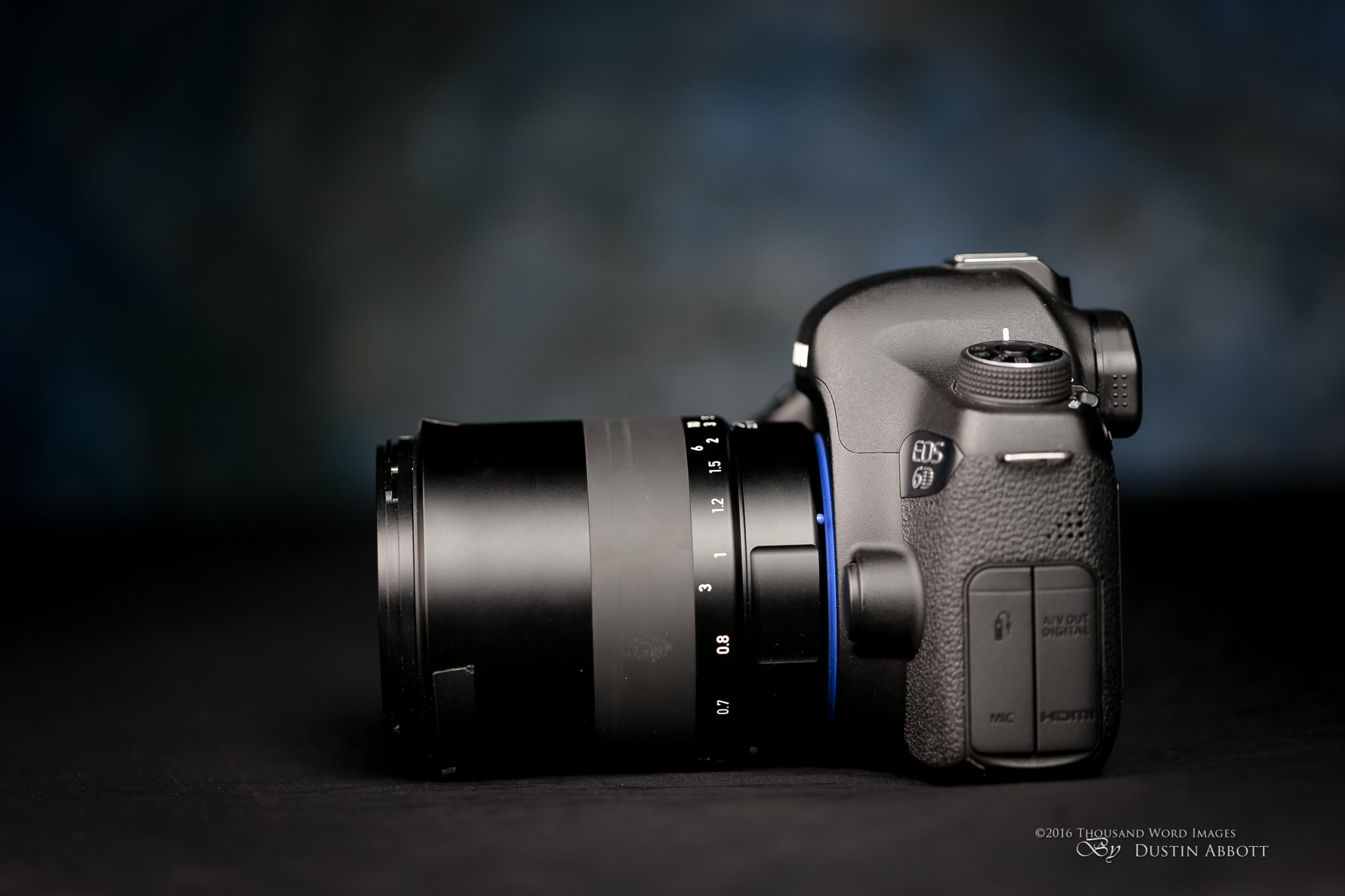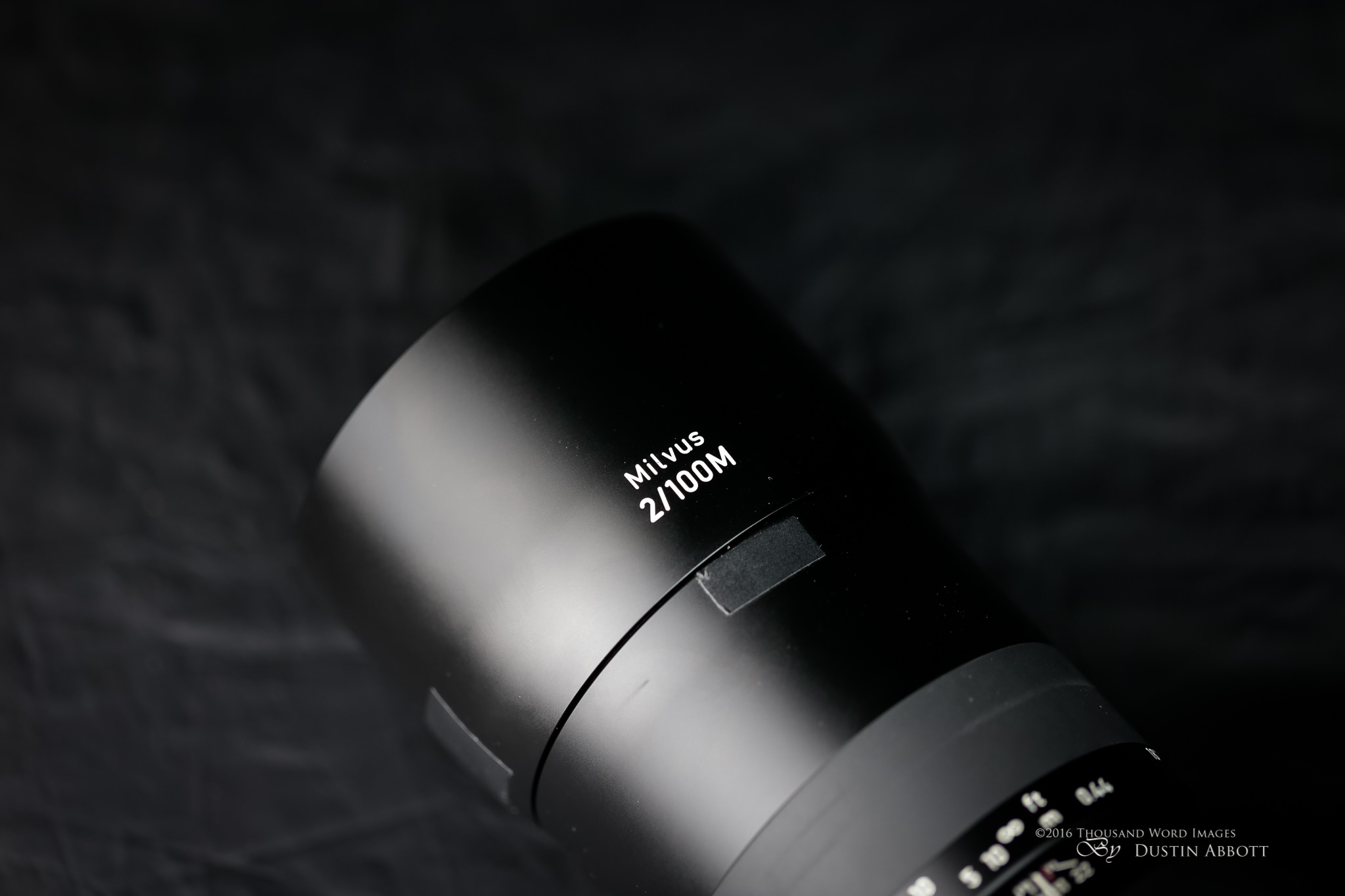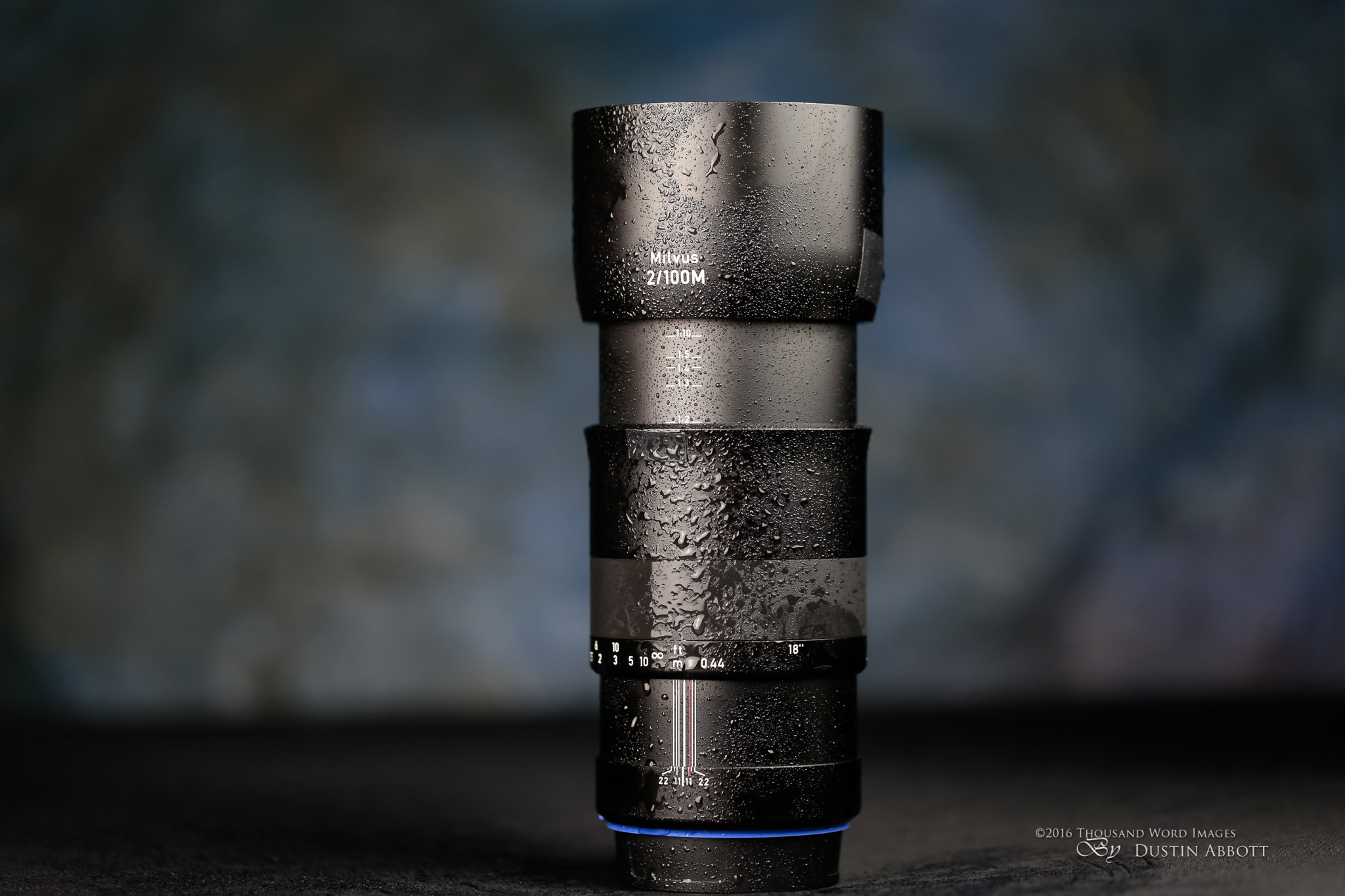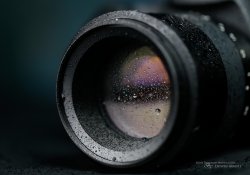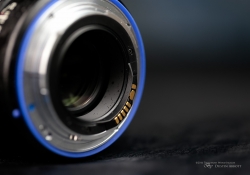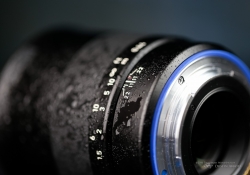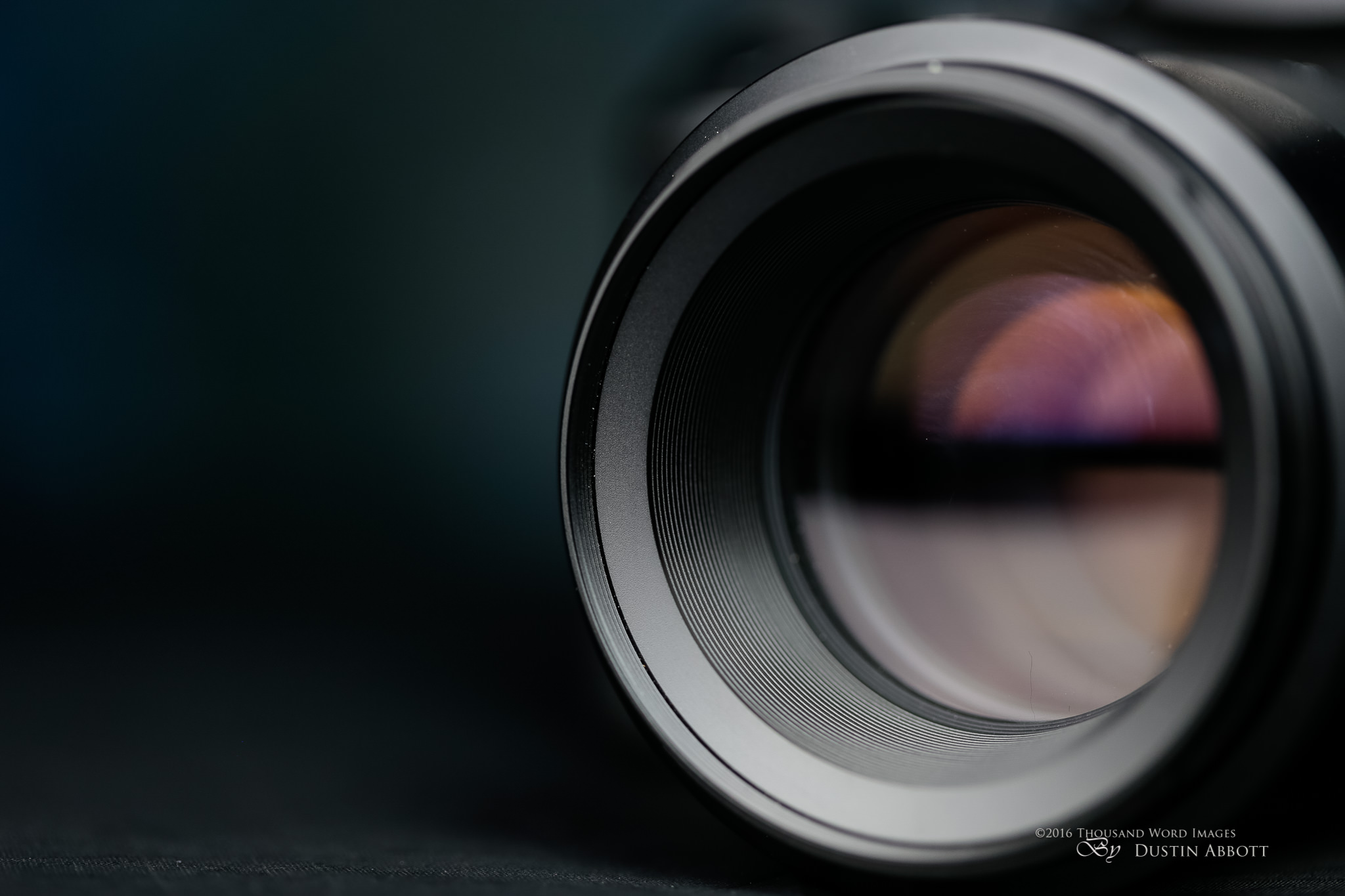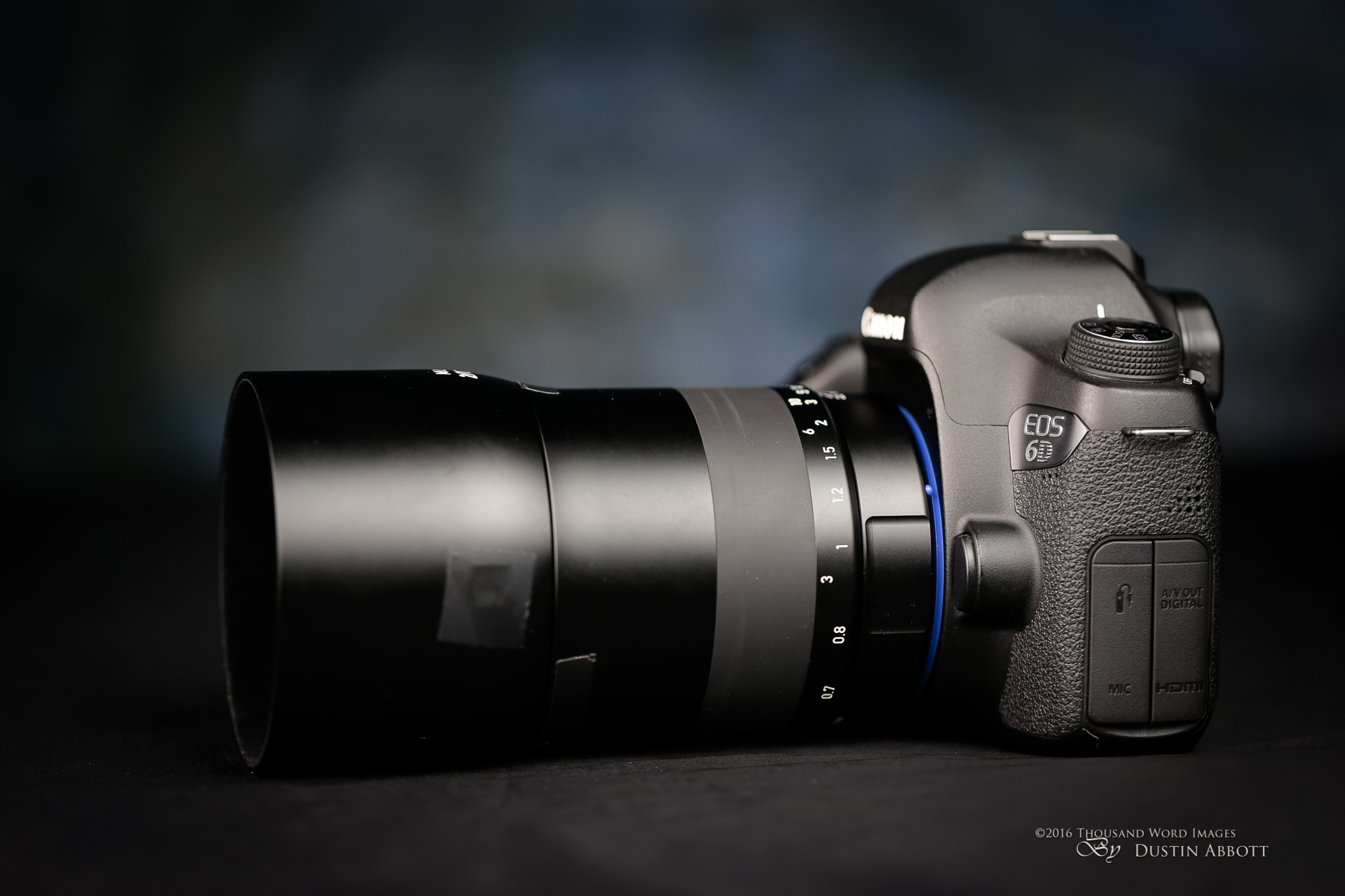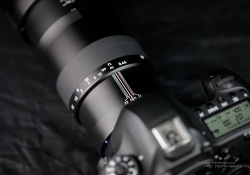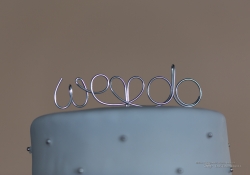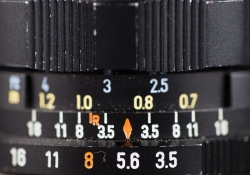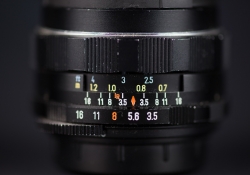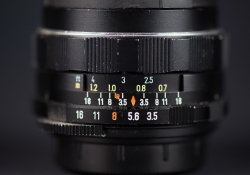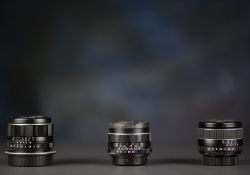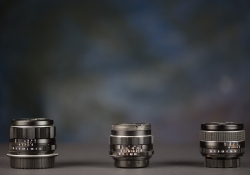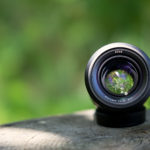Don’t Call Me Makro
Until this point my coverage of the Milvus line from Zeiss has focused on the the lenses with new optical formulas, namely the 50mm f/1.4 and 85mm f/1.4 lenses. Over this past year, however, I’ve gotten a lot of requests to review the Milvus 2/100mm (100mm f/2), a rebuild of the Classic lens line Makro Planar T* 2/100mm. While I did review the Makro Planar 2/50mm, I had never gotten around to reviewing the 100mm lens (though I had planned to do so). As a result, when I had a little lull in my review schedule (before the September flurry of announcements and releases), I asked Zeiss to send the Milvus 100mm to me and they obliged. I’ve spent the last several weeks with the Zeiss Milvus 2/100mm, and I’m happy to bring you my findings. One thing to notice here is that the name of this lens has been shortened in its Milvus form. It was called the Zeiss Makro-Planar T* 2/100mm, but now it is simply the Zeiss Milvus 2/100mm. Read on to see why that subtle difference is probably a smart move by Zeiss…
Check me out on: Google+: | Facebook: | Twitter: | Flickr: | 500px: | Sign Up for My Newsletter :
Prefer to Watch Your Reviews? Just Click Below!
I Was Expecting Someone Taller
My first surprise upon opening the custom made lens box (each Milvus and Otus lens comes in a display box with custom molded foam inserts) was that the lens was smaller than what I expected. My experience with the Milvus line has been that they tend to both larger and heavier than what you expected, and so I was surprised to find that while the heft of the lens was as expected (1.85lbs/843g), the overall length was shorter than I anticipated. It is only 3.17”(80.5mm) around and 4.09” (104mm) long, or really not much longer than the Milvus 1.4/50mm that I recent reviewed (3.84”/98mm long) and surprisingly a little bit lighter (Milvus 1.4/50mm is 2.03lb/922g). As the series goes it is a fairly compact lens, and is actually shorter than the Canon EF 100mm f/2.8L Macro IS USM that I own and will be using as a comparison. The Canon 100L is 4.84”/123mm long, but weighs in at a considerably lighter 1.38lb/625g.
Here’s a video look at the build, design, and specifications:
Note that I am reviewing a copy from Zeiss that had been put in “stealth mode” before the public could see it, so all of the badges have been removed and covered with gaffer tape.
While the Canon has autofocus and an image stabilizer, it is easy to see where the extra heft comes from. Zeiss lenses are all metal and glass and have a unique density that no other lens quite has. They have a unique feel in the hand; you KNOW you are holding a Zeiss. The build quality surpasses any equivalent lens and feels designed to last for a lifetime or two. The only interruption of metal (a nicely anodized black with a satin finish) is the rubberized focus ring.
My only real criticism of the Makro Planar 50mm f/2 was the surprisingly stiff/heavy action of the focus ring which remains as the lone Zeiss lens that I’ve used that I didn’t love focusing. I was told that the extra resistance was to help keep the lens from drifting/creeping when in some macro shooting positions. Knowing the practical purpose didn’t really improve my impression of the focus action, though. I’m happy to report that the Milvus 100mm focuses perfectly. The action is incredibly smooth and precise, allowing you to both easily focus but with just enough friction to find the perfect focus point and leave it there. Zeiss has this down to a literal science, and the Milvus 100mm is a joy to focus.
That’s great news for a lens that does duty as a macro lens, as many of us who do macro prefer manual focus at macro distances. It can be hard to put an autofocus point exactly where you want, and those tiny margins means that even a slight miss can make or break the image. The Milvus 100mm is a lot of fun to use at those close focus distances because of the incredibly smooth and precise focus ring.
The Milvus 100mm is most certainly NOT an internally focusing lens. Both the inner barrel extends along with the center focusing portion of the lens (it extends both before and beyond the focus ring). This looks ungainly in photos, but you don’t actually notice this in practice. It becomes longer than the Canon 100L when fully focused toward the macro position, but the Canon has a longer lens hood and as a result they are almost identical in length with the lens hoods in place and the Zeiss fully “zoomed out”. Unlike some lenses, however, the Milvus 100mm has a long enough minimum focus (or “working”) distance that you won’t have to worry about shading or bumping against your subject. While I prefer internally focusing macro lenses, I can appreciate the compact nature of the Milvus 100mm; it is easy to bring along in a bag because of its relatively short length. Even in a protective bag (the EasyCover 105x160mm case fits perfectly) the lens can stand upright in my camera bags.
Zeiss lenses have always been beautifully made, but the Milvus series upped the ante by implementing a Zeiss first: weather sealing. In typical Zeiss style this implementation is actually more thorough and rigorous than the competition. The lenses sport the standard rear gasket (though in a stylish Zeiss blue) but also have internal seals to help prevent in intrusion of dust or moisture. That is particularly comforting in a lens with a design like the Milvus 100mm that has so many externally moving parts. If your portrait or wedding session turns inclement you can continue shooting without fear.
There is a significant variation between the Canon and Nikon version of Zeiss lenses. The Canon versions (ZE) have an electronically controlled iris diaphragm for the aperture that functions just like any other lens. The Nikon versions (ZF) have the option to control the iris diaphragm electronically from within the body (though with slightly fewer “steps” at each aperture value), but also include a manual aperture ring. The extra trick for Nikon shooters is a nice one; you have the option to put the lens into “declicked” mode where there are no defined aperture positions and you can rack the aperture – useful for certain pulls in video use.
Like the Canon the Milvus 100mm has a highly standardized 67mm front filter thread, though the Zeiss sports metal rather than plastic threads. The front element is quite recessed in the Zeiss design, so under most circumstances it is going to be pretty well protected even without a filter, but using an ND or CPL filter under the right conditions is often a smart move.
As the front barrel extends into the macro range, magnification ratios start to appear. The highest magnification value is 1:2, which we will elaborate on in a moment.
I really like the implementation of the lens hoods on this series; the lens looks finished with the hood attached. Some lenses look like a cheap plastic afterthought has been tacked on the front. On the Milvus line the design flow moves in one comprehensive direction throughout the whole lens with the hood attached.
I miss one thing on this design: there is no front bezel surrounding the front element with the Zeiss/Lens information there. I love to shoot stylish product shots of lenses, and while the finely machined metal ridges in the front look good, I miss the lens info being there.
While some Zeiss purists are opposed to the new Milvus/Otus look, I think that like the Classic lenses this is a design that will still look good and current in decades. Here are a few more photos of this beauty.
Who Is the Milvus 100mm For?
The Milvus 100mm is something of a hybrid lens. I find it interesting that Zeiss dropped the Makro Planar designation, and from a marketing perspective I think it might be a smart move. Marketing this lens as a macro lens puts it at a disadvantage, as unlike many competitors it isn’t a true 1:1 (life size) macro lens. It’s maximum magnification ration is 1:2 (think 50% life size instead of 100%). Here’s the difference between the Canon at 1:1 and the Zeiss at 1:2.
The difference is noticeable, obviously, and in the minds of some this disqualifies the Zeiss from being a “true” macro lens. And, in all honesty, if your purpose is only (or primarily) macro, the Zeiss might not be the best lens for you (though obviously that magnification ratio can be extended through the use of extension tubes).
Experienced photographers know that macro lenses are extremely versatile tools that are good for much more than just macro shooting. They make good portrait lenses, general purpose, and even landscape lenses. Many of them are extremely sharp, produce nice bokeh, and are at key focal lengths for portraiture. All of this is very true of the Milvus 100mm. I think of it more as an extremely versatile lens that just happens to focus very close. All of these reasons plus the incredibly precise focus ring makes it an equally compelling tool for video. Zeiss’ decision to market the Milvus version as just the Milvus 100mm f/2 allows the lens to compete as an exceptional short telephoto. The 1:2 magnification becomes an asset rather than a liability. Canon’s own 100mm f/2 lens has a rather pathetic .14x magnification (much like 85mm lenses), so the Milvus 100mm and its .50x magnification suddenly looks pretty good.
Another unique feature of the Zeiss 100mm has been a maximum aperture of f/2 which allows in twice the light of competing f/2.8 lenses. As a macro lens the f/2 aperture is arguably somewhat useless; depth of field at macro distances (even 1:2 magnification) is incredibly small and most macro photographers are rarely using their macro lenses even at f/2.8 for macro. Case in point: the minimum focus distance for this lens is .438m/1.44ft. At f/2 the depth of field is a tiny 2.31mm or 0.09 inches. In many situations that just isn’t enough depth of field to hardly have anything in focus. But as a general purpose, wedding, or portrait lens the f/2 aperture is a huge asset, allowing for a more three dimensional image with greater background blur and, of course, allowing one to keep their ISO settings lower when shooting in low light situations.
In many ways this lens is best suited for wedding photographers. It is incredibly versatile, allowing one to both shoot closeups of the rings, shoes, dress, or decorations while then allowing one to shoot posed shots with beautiful rendering. The one exception to this rule is that the Milvus 100mm, like all Zeiss lenses for Canon and Nikon, is manual focus only. It has a very long focus throw of nearly 360 degrees, which is great for precision focus but not for trying to keep up with the action. An experienced manual focuser could make this work during the ceremony, but an amateur would be better served with a good autofocus lens. I used the lens for one of my summer weddings, and while I never use a tool I’m not familiar with for the critical moments in a wedding (learned that lesson the hard way!), I did use it extensively during the more relaxed reception portion with delightful results. Awesome bokeh, beautiful rendering, and a great angle of view for that kind of setting. Here’s a little gallery of wedding related images:
How’s the Image Quality?
Let’s take a closer look at the image quality. Zeiss didn’t mess with the optical formula of the MP 100 very much because it was already exceptional. There have been some incredibly sharp lenses released in the last couple of years, but the Milvus 100mm has no problem holding it’s own. I encourage you to visit the Lens Image Gallery and see a number of images for yourself!
Here are a series of comparisons between the Zeiss and the Canon 100L at various distances. I encourage you to watch the video review to get my commentary on these.
At minimum focus (Canon, Milvus @ f/2, Milvus @ f/2.8)
At Medium Distance (Both images full frame wide open | Comparison Crops from Left to Right Comparing the Two):
Here’s a similar series of crops with both lenses at f/5.6:
Finally, at infinity focus (Canon at f/2.8, Zeiss at f/2):
As you can see, the Milvus 100mm is delivering a very impressive optical performance against a very sharp lens. Perhaps most important here is the consistency of the sharpness across the frame; that makes it great for macro shooting, but also great for portrait work. The Zeiss is capable of delivering just as good of image quality at f/2 as the Canon is at f/2.8. Vignette is also about equal, but when the Zeiss is stopped down to f/2.8 its vignette is basically gone. The Zeiss also exhibits better contrast at essentially all aperture values. There is only one real optical flaw that I can find, and that is in spherical and axial chromatic aberrations. These result from unequally focused colors, but this can result in reduced contrast in areas where the color fringing exhibits itself. You can see what I mean in this shot of glasses at a wedding reception:
Note the fairly obvious fringing on the glasses? This was by far the most obvious example that I saw during my review period, though I could see a bit during my sharpness test using the vintage lenses above. I also felt that this reduced some of the apparent contrast wide open in the infinity focus test. This can be eliminated by stopping down a bit, and even by f/2.8 there is a significant improvement, but I did notice a few traces even in the medium distance f/5.6 samples. This is the one area where the Canon has the edge, and is the one fly in the ointment for the optical performance of the Milvus 100mm. I loved using the lens for video (I use it for a lot of focus pulls in the early part of this Milvus 135mm preview video) with the exception of the moments that a bit of fringing showed up.
I use a Canon 6D body setup for MF glass (with an EG-S Precision Matte focus screen involved). My hit rate with MF glass is very high with this setup, and I’m able to take advantage of the great sensor on the 6D without concerns over its less than amazing AF system. With a precision matte screen you see true depth of field, and thus can literally watch focus moving from one object to another as you focus. It’s surprisingly fun, and those who have never experienced something like it might be astonished at how much they actually might enjoy the MF experience. Focusing in this way is not dependent on focus points at all, so you can compose just as easily with your subject right on the edge of the frame for creative purposes, and the fact that the sharpness extends there means that you can compose however you want.
The bokeh quality is likewise exceptional. Check out this photo of lights at a wedding reception.
There is no trace of “onion bokeh”; the bokeh highlights are extremely clean and have a very nice transition without line doubling or hard edges. The result? Nice, soft bokeh. I was very pleased with all of the defocused regions in photos I took with the Milvus 100mm.
Distortion is virtually non existent, and the lens has very good flare resistance as well. It makes for a lovely portrait lens. I did a direct comparison with both the Canon 100L and the brand new Milvus 135mm f/2 lens (a virtuoso of a lens) in a portrait setting. I shot from a tripod, used 10x Live View, got the model to hold static poses, and equalized the white balance so that you can focus on the compression, rendering, sharpness, and bokeh. A couple of observations: even with equal white balance the Canon renders warmer than the Zeiss lenses. The Canon has a less shallow DOF because of a smaller maximum aperture, but that is a bit less of a penalty here because there is a lot of separation from the background. The 135mm provides a different kind of compression (both of features and the background) at both distances. I’ll let you determine your favorite.
Milvus 100mm:
Canon 100L:
Milvus 135mm:
This test favors the Zeiss lenses because of the careful focus and use of the tripod. In the real world the Canon has two significant advantages: autofocus and an image stabilizer. I’ve always found it an underrated portrait lens. Each one of these lenses is a fantastic portrait lens in its own way: different strokes for different folks. They are all tremendous sharp even wide open for portraits.
Watch for a future article where I compare the strengths and weaknesses of the Milvus 100mm f/2 and the brand new Milvus 135mm f/2. A lot of people may choose between these two options, and I want to spend more time with that subject.
Conclusions
I have heard reports from some people that this lens is their favorite in the Milvus lineup. I can see why, as it brings a tremendous amount of versatility with it. The large aperture makes it a great portrait and wedding lens, while the close focus ability and .50x magnification makes it ready for shooting the details. The buttery smooth focus ring and long focus throw makes it a compelling video lens, and the inclusion of quality weather sealing is a huge asset. The icing on the cake is the exceptional image quality that combines a lovely degree of sharpness and resolution with exquisite bokeh. The only optical stumble that I can see is more chromatic aberrations than what I would like. All in all this a very compelling lens, though it comes at a premium price tag. It is also a premium lens, though, and if your tastes run towards things that are made exceptionally well, this lens (like many Zeiss lenses) may just be your cup of tea. Just be prepared to manually focus. If Zeiss lenses had autofocus they would undoubtedly be more mainstream, but Zeiss continues to defend the role of manual focus lenses in an autofocus world. For some of you that completely rules their lenses out of the equation, but there is also a certain niche of photographers that have fallen in love with not only the images that Zeiss lenses can produce (we can all agree on that), but also in the rich, nuanced process of the manual focus experience.
The Zeiss Milvus 2/100mm may or may not be the lens for you. It may or may not be a macro lens (depending on your perspective of what makes a lens truly a ‘macro’ lens). But it is unquestionably is another superlative optical instrument from Zeiss. It is beautifully made, extremely versatile, and generally a joy to use. Perhaps a few extra shifts here and there to help pay for it?
Pros:
- Perhaps the most versatile lens in the Milvus lineup
- High degree of weather sealing
- Buttery smooth focus action
- Beautiful, soft bokeh
- Excellent sharpness across the frame from wide open
- Relatively compact
- High level of magnification (1:2)
- Relatively low vignette
- Almost no distortion
Cons:
- Expensive compared to competing options
- Does not have autofocus or an image stabilizer
- Reaches only 1:2 magnification rather than 1:1
- Not internally focusing
- Shows chromatic aberrations in some situations
Gear Used:
Canon EOS 6D DSLR Camera (Body Only)
Zeiss Milvus Makro-Planar T* 2/100mm
Super Precision Matte Eg-S Interchangeable Focusing Screen
Adobe Lightroom CC Software for Mac and Windows (Boxed Version)
Adobe Photoshop Creative Cloud 1-Year Subscription
Alien Skin Exposure X (Use Code “dustinabbott” to get 10% anything and everything)
Purchasing your gear through B&H and these links helps fund this website and keeps the articles coming. Thank you for your support.
Great News! I can now offer a 5% discount on all purchases at Amplis Foto, Canada’s Leading Photographic Supplier. Please enter discount code: AMPLIS52016DA in your cart. It is good for everything in your cart, and is stackable with other coupons, too! It will take 5% off your entire order! Proceeds go towards keeping this site going and providing you with new reviews!
Check me out on:
Google+: | Facebook: | Twitter: | Flickr: | 500px: | Sign Up for My Newsletter :


